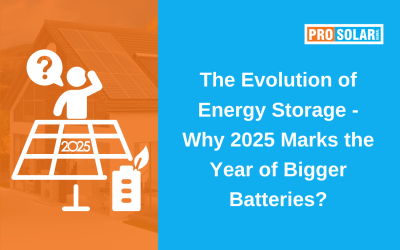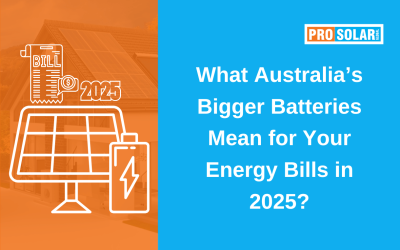Australia’s energy landscape is evolving rapidly — and at the heart of this transformation lies the home battery revolution. Once considered a luxury add-on to rooftop solar systems, home batteries have become an essential component of energy independence, sustainability, and cost savings.
In 2025, new-generation home batteries are smarter, more efficient, and more affordable than ever before. This evolution is changing how Australians power their homes — enabling them to store excess solar energy, reduce dependence on the grid, and even earn from their surplus electricity.
This blog explains why 2025’s home batteries are true game changers, exploring the latest technological advancements, market trends, and what these mean for Australian households moving toward a clean, energy-secure future.
The Rise of Home Battery Storage in Australia
Australia has long led the world in rooftop solar adoption, with more than 3.7 million small-scale solar systems installed nationwide as of 2025, according to the Clean Energy Regulator. But until recently, battery storage lagged behind.
That’s changing fast. The growing demand for energy security, rising electricity prices, and improving battery economics have created a perfect storm for battery adoption. In fact, the Clean Energy Council’s 2024 report showed a record 48% increase in household battery installations compared to the previous year.
What’s Different About 2025’s Home Batteries?
Home battery technology in 2025 looks very different from what it did even three years ago. The newest generation of storage systems combines higher capacity, smarter energy management, and greater integration with other home technologies.
1. Higher Energy Density and Longer Lifespans
Modern lithium-iron phosphate (LiFePO₄) batteries dominate the market due to their enhanced safety, stability, and longevity. Many systems now offer 10,000+ charge cycles and warranties of 10–15 years, making them a reliable long-term investment.
These improvements mean homeowners can store more power without taking up additional space — a significant advantage for urban properties with limited installation room.
2. Smart Energy Management Systems
One of the biggest leaps forward in 2025 is the integration of AI-driven energy management. Home batteries can now analyse consumption patterns, weather forecasts, and electricity prices in real time to optimise when to charge or discharge.
This intelligent automation ensures households use their solar energy more efficiently, maximising self-consumption and minimising grid reliance — without the homeowner having to lift a finger.
Systems such as Sungrow SBR, Tesla Powerwall 3, and Alpha ESS Smile now come equipped with smart connectivity and mobile monitoring apps, putting complete control of energy usage in the homeowner’s hands.
3. Virtual Power Plant (VPP) Integration
In 2025, thousands of Australian households are joining Virtual Power Plants (VPPs) — networks that link individual home batteries to support the national grid.
When demand peaks, these systems automatically share stored energy with the grid in exchange for financial credits or rebates. This innovation allows battery owners to earn income from their systems while contributing to grid stability and reducing the need for fossil-fuel peaking plants.
4. Emergency Backup and Blackout Protection
Extreme weather events are becoming more frequent across Australia, and energy reliability is increasingly important. The latest home batteries provide seamless backup power, automatically switching on during grid outages.
Whether it’s keeping the fridge running during a storm or powering critical medical devices, this capability transforms a home battery from a convenience into a necessity.
5. More Affordable Than Ever
Falling technology costs have made 2025’s home batteries more accessible to average households. According to CSIRO’s 2024 Energy Storage Forecast, battery prices have dropped by around 25–30% in the past three years due to mass production and supply chain improvements.
This price decline, combined with continued government rebates, means batteries now deliver faster payback periods — often within 6–8 years, depending on usage and system size.
Government Support Boosting Battery Adoption
Federal and state governments continue to encourage home battery installations through a mix of incentives and rebates.
Under the Small-scale Renewable Energy Scheme (SRES), eligible systems that include solar and battery storage receive Small-scale Technology Certificates (STCs), reducing upfront costs.
In addition, several states have their own programs:
- Victoria’s Solar Homes Program offers up to $2,950 off eligible batteries.
- South Australia’s Home Battery Scheme provides subsidies for grid-connected batteries.
- Queensland’s Battery Booster Program offers rebates for approved installations.
These measures have collectively made battery ownership more financially attractive and accelerated nationwide adoption.
The Shift Toward Energy Independence
For many Australians, the goal of installing a battery is simple:
1. Energy independence.
By storing their own clean energy, households can reduce grid consumption, protect themselves from fluctuating energy prices, and enjoy greater control over their electricity use. With a large enough battery, some homes can achieve up to 90% self-sufficiency, relying on the grid only during prolonged cloudy periods or exceptionally high demand.
This independence is particularly appealing for remote and regional communities where grid reliability can be inconsistent.
Environmental Benefits of Home Batteries
Beyond financial savings, batteries play a vital role in reducing carbon emissions. By enabling solar power to be used even after sunset, they maximise the clean energy generated and minimise reliance on coal- or gas-fired electricity.
This shift is crucial to meeting Australia’s net-zero emissions target by 2050. According to the Department of Climate Change, Energy, the Environment and Water (DCCEEW), decarbonising household energy is one of the key pathways to achieving national climate goals.
The Future: Smarter Homes, Smarter Grids
As battery storage, solar, and electric vehicles (EVs) converge, Australian homes are becoming mini power stations. Integration between rooftop solar, EV chargers, and smart batteries enables real-time energy management and grid balancing.
This synergy forms the foundation of Australia’s future energy network, where every home can produce, store, and share clean power seamlessly. The result: a stronger, cleaner, and more resilient energy system for all.
Frequently Asked Questions (FAQ)
1. Are home batteries worth it in 2025?Yes — 2025’s home batteries offer improved efficiency, longer life, and lower costs. Combined with rising electricity prices and government rebates, they provide excellent long-term value and greater energy independence.
2. How long do modern home batteries last?Most premium lithium-iron phosphate batteries now last 10 to 15 years, with warranties covering thousands of charge cycles. Many retain over 70% capacity even after a decade of use.
3. Can home batteries work without solar panels?Yes, but their benefits are limited. Batteries can charge from the grid, but pairing them with solar maximises savings and sustainability by using free renewable energy.
4. How much energy can a typical home battery store?Most home batteries in 2025 range between 10–15 kWh, enough to power an average household for several hours or overnight, depending on energy use.
5. What is a Virtual Power Plant (VPP) and how can I join one?A VPP links individual home batteries into a shared network that supports the grid during peak times. Many energy retailers and state programs now offer VPP participation with financial rewards.
Conclusion
The era of home energy storage has truly arrived. 2025’s home batteries are transforming how Australians produce, store, and use electricity — turning solar-powered homes into smart, self-sufficient energy hubs.
As battery technology continues to improve and incentives remain strong, there’s never been a better time to invest in the future of clean, reliable energy.
Talk to our expert by calling 1300 181 191 and discover how Prosolar Global can help you harness the power of 2025’s game-changing home batteries today.




